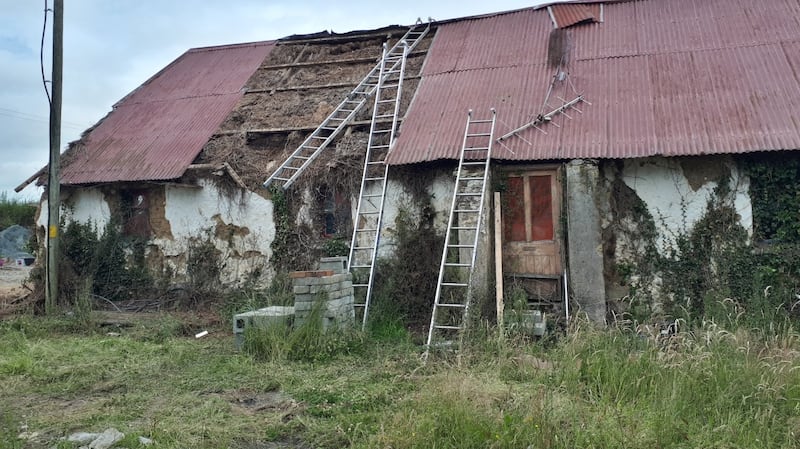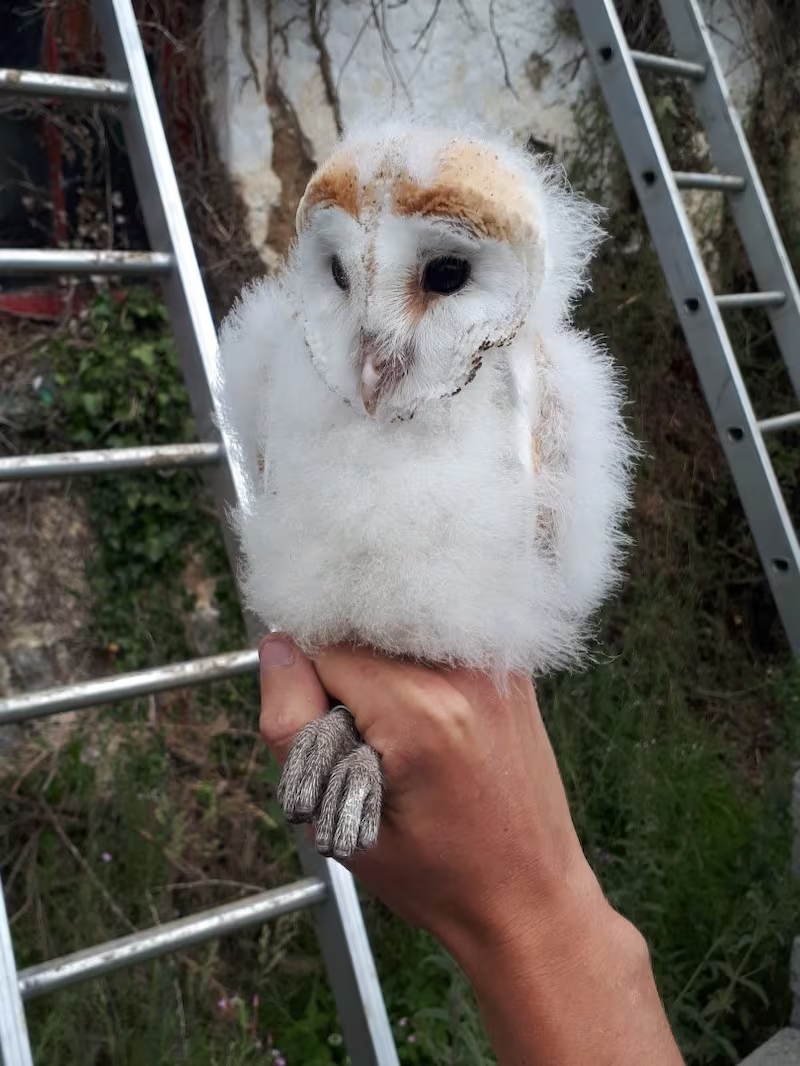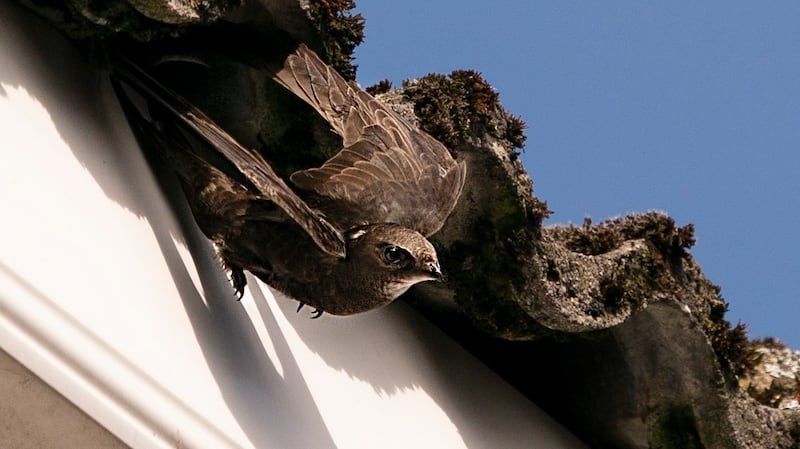Homeowners who are planning renovations and retrofits are being urged to consider wildlife like barn owls and swifts whose habitats are in decline in Ireland.
The majority of Ireland’s breeding swift, swallow, house martin, starling and barn owl nest in buildings and are reliant on man-made structures.
Cracks and crevices in abandoned farmhouses are popular nest sites, and if works are carried out without due regard to the wildlife that resides within, this can result in direct disturbance, as well as the loss of breeding sites.

As the Government plans the retrofitting of 500,000 homes by 2030, BirdWatch Ireland is urging homeowners to remain vigilant about potential nest sites in old buildings.
Last July, Alison Lynch and her partner got a surprise call from their builder during the renovation of their 200-year-old derelict cottage in north Cork. The builders had removed the tin roof and found a nest with three young barn owl chicks tucked into the older thatched roof underneath.
When the seven-week old chicks, two males and one female, were examined by Alan McCarthy, barn owl research officer at BirdWatch Ireland, he found dead prey also in their nest – some greater white-toothed shrews and a wood mouse – evidence that the chicks’ parents were close by after dropping off some food.

The builders covered the nest again with the corrugated iron exactly as they had found it, and Mr McCarthy and Ms Lynch returned at dusk to monitor the nest.
“We watched from a distance under a little shed looking out . . . after dusk, waiting for the adults to come back,” Mr McCarthy said. “Because they have a silent flight you never hear them coming, you only see this ghostly white figure in the sky. And they did come back. They returned to the nest with prey three times.”
Ms Lynch and her partner paused their building project for the duration of the nesting season last year. Now, there is a new artificial nest box in a tree nearby, ready for the barn owls when they return this year. They are site faithful, returning to the same general nest site every year.

Red-list species
“We think they’re back,” she told The Irish Times.
“I grew up on a farm and I don’t ever remember seeing them. They’re beautiful. Sometimes at night-time, when the mother or father were coming back or leaving the nest for feed, they would screech.”
Barn owls are a red-list species of high-conservation concern in Ireland. The intensification of farm practices have had an effect on their population.
John Lusby, raptor conservation officer at BirdWatch Ireland, said if you go back a few generations, a lot of the older farm buildings had a purposely-designed owl window which allowed them access into the loft space – they could nest in there. "It was seen as hugely beneficial long before chemicals were used for rodent control."
There were lots of examples of farmers going back to the older methods of rodent control and encouraging barn owls by putting up nest boxes, he said. “But it’s not just about the nest box, it’s also the other measures. There’s a reason why they’ve become more scarce, due to the intensification of farm practices.
“To enhance habitat, that’s where we see gains, improving the habitat, reducing sprays and chemicals, increasing the grass margins which are good for biodiversity.”
He added: “Field mice are very important for barn owls and other predators. It’s all interlinked. If barn owls are there, there must be good small mammal populations, but then there must be good grass margins. Barn owls are a good indicator species – if they’re doing well, other parts of the environment are doing well too.”
Modern buildings do not provide the same opportunities for wildlife, but there is a lot that homeowners can do to improve modern buildings to ensure there is space for nature, said BirdWatch Ireland.
Swifts, which are also a red-list bird species of high conservation concern here, have been coming to Dermot Doran's farm in Kildare ever since he installed swift nest boxes around his own dwelling house.

Enhance biodiversity
“I went to a Bridwatch Ireland meeting in 2013 and the theme of the meeting was: ‘swifts in serious decline, how can we help?’ I just took that on board and when I came home from the meeting I thought, I like them and I might try and do something for them. The next morning I looked at different brands of swift boxes.
“I put up my first three boxes in 2014 having never seen or recorded a swift in the area near me. When you put up the box, it’s recommended that you put a lure on a loop and amplify it at different times of the day. What you’re doing is you’re calling them in from the sky. They like to nest in close proximity to each other. They’ll come down and suss out what’s going on. Nothing really happened until 2016 when I attracted my first pair. I had another three pairs in 2017. I’ve 40 boxes now on the house and 15 pairs.”
To enhance biodiversity on his farm, he cuts only the hedgerows that line the road, and leaves grass margins and nettles and thistles to grow. Swifts, which eat insects on the farm, are an important part of the ecosystem, he says.
“When the first swift arrives, you know summer is here. They’re a bird of the summer. When I see the first swift in the sky, which could be any day now, it just lifts you. They’re a fabulous bird that’s in decline and they need all the help they can get.
“When they’re finished breeding and leave the nest for the final time, it’s amazing, they stay on the wing until they come back the following year.
"They leave for Africa and they stay in the air for eight months. They feed on the wing, have been recorded mating on the wing, and sleep while flying. That amazes me and I just love their calls.
“The only time they touch a solid surface and perch is at the nest.”










